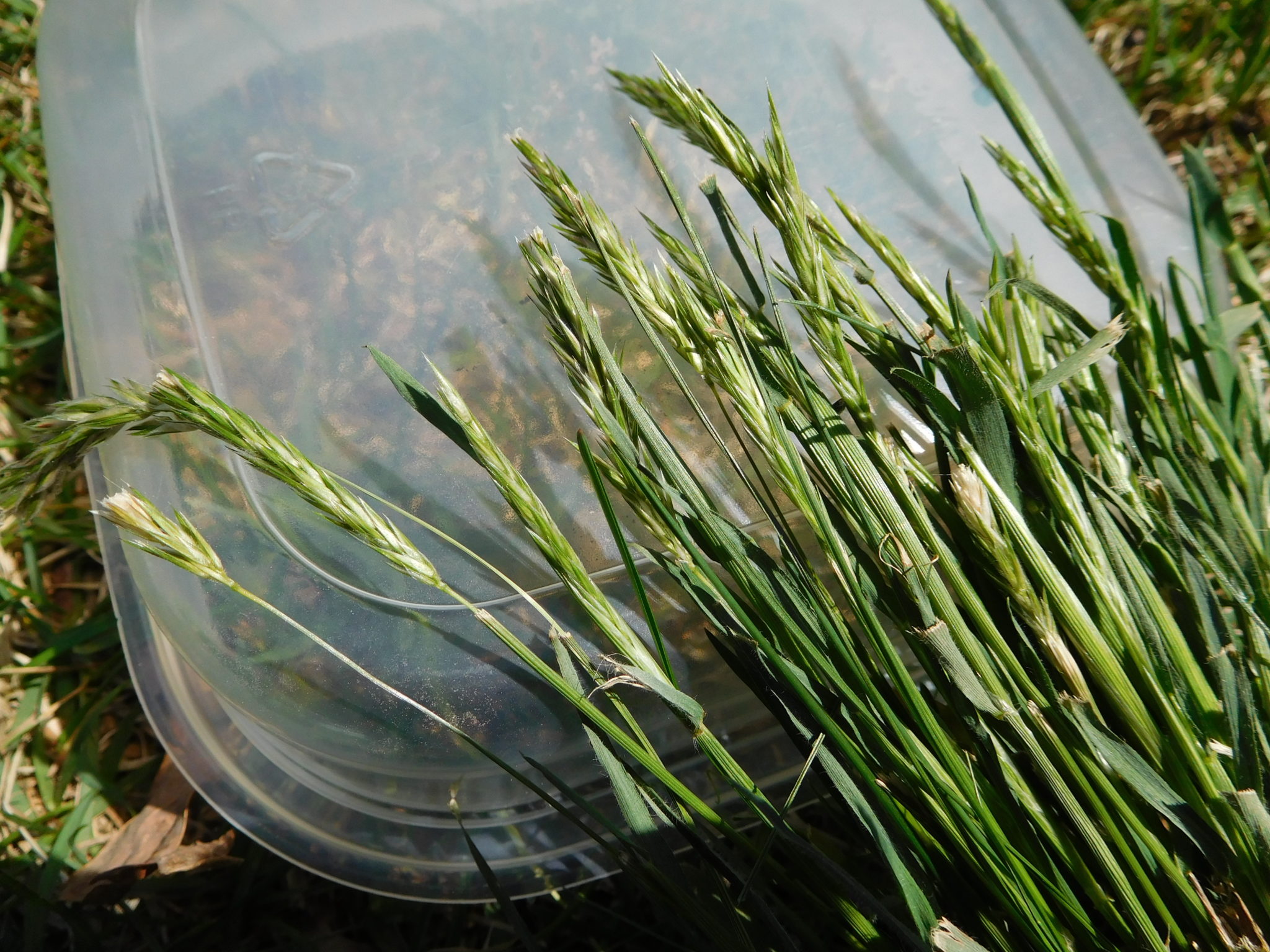Sweet Vernalgrass and Annual Bluegrass in Lawns, Roughs and Sod Fields
This was written by Dr. Peter H. Dernoeden of the University of Maryland.
Sweet vernalgrass (Anthoxanthum odoratum) is found mostly in pastures, roadsides and ditch banks. In transition areas of the mid-Atlantic, and especially on the Delmarva Peninsula, it has found its way into fall seeded stands, lawns, golf roughs and sod fields. It seems likely that vernalgrass has been introduced to our region in grass seed harvested from the Pacific Northwest. The biology of vernalgrass in turf is unknown. It behaves as a perennial in more northern regions and as a winter annual in more southern locations. Leaves die in summer and plants disappear; however, given the dense stem-bases it seems likely that plants could survive from buds on stem bases as well as seed. Vernalgrass prefers acid soils and avoids drought prone areas. Plants appear in tufted clumps (i.e., no stolons or rhizomes) and have dense, fibrous roots, making plants difficult to pull out of the ground. Leaves are coarse, about 0.20” wide, and are pointed at the tip. During winter, clumps are flattened, but as seedheads are produced in early spring as soils warm, leaves grow rapidly above canopies that have not been mowed all winter. In the absence of mowing, seedhead stems (i.e., culms) grow to a height of 2’.
Botanical manuals describe sweet vernalgrass as having hairs on leaves, leaves rolled in sheaths, a large notched ligule and the odor of fresh cut hay. The biotypes I see here have flattened or compressed sheaths, a papery white pointed arrow-like ligule, no hairs, and a somewhat shiny under-leaf (similar, but not as shiny as annual ryegrass). The easiest and most reliable way of identifying sweet vernalgrass is to detach a clump and place it in a plastic bag for a few minutes. The odor is pungent and sage-like. The pleasing fragrance of this grass is used as a flavoring in some types of brandies in Eastern Europe (i.e., a form of sweet smelling, but nasty tasting, “white lightening”). The early appearance of seedheads is another good identifier of sweet vernalgrass. Seedheads are dark-green when young, but as they mature they turn yellow-brown. Long seedheads (≈ 2”) are crowed together, and the large seeds are easy to see.
Since sweet vernalgrass behaves mostly as a winter annual, and seldom is highly invasive, herbicides usually are not needed. Mowing will mask plants and above ground tissue dies in response to higher temperatures in summer. I am unaware of any vernalgrass herbicide studies, but postemergence control may be achieved with fenoxaprop (Acclaim Extra) or quinclorac (Drive).
Annual bluegrass (aka Poa annua ssp. annua or Poa) is a highly invasive a winter annual. “Poa” is the most important weed of golf turfs worldwide and is enigmatic since its biology is diverse and it is extremely difficult to control once established. Annual bluegrass is most invasive in shaded and wet areas (like swales). Seed germinate mostly from Sept. to early Dec., (some minor levels of germination occur overwinter), but plants generally go unnoticed until spring. “Annual” is a somewhat misnomer since some plants may persist all summer in wet and shaded areas. Furthermore, there are perennial biotypes (P. annua spp. reptans) that can persist indefinitely. Annual bluegrass leaves are yellow or apple- green in color, which contrasts with
darker-green turfgrasses. Annual bluegrass is most noticeable in spring, usually March – May, when seedheads are produced in large numbers. In higher cut turf, flowers are whitish-green in color and stand-out. Given its diversity, some flowering can be evident during the winter as well as the heat of summer. Like all bluegrasses, leaves have a prominent boat-shaped tip and two “railroad-like” lines down the center of leaf surfaces. There is a relatively long, papery white ligule in the collar, which is notably toothed or notched. Following flowering, most plants die in response to heat stress beginning in late June and July, leaving dead areas throughout lawns and roughs. In wet shade, however, some plants can survive summer. When the homeowner complaint comes about dead spots in July, the normal response is that the lawn looked good in spring.
There are several options as it relates to reseeding, preemergence and postemergence control, but all are complicated. Preemergence herbicides are most reliable, but they need to be applied around Labor Day. The big problem is that overseeding usually is performed at this time and if this is the case for you, these herbicides cannot be used. Thus, it is best to seek assistance from a Genesis Professional when trying to tackle annual bluegrass with herbicides. I have heard numerous complaints from LCO that pre’s are not working. Failure is due to several possibilities, but the most notable are: the site had annual bluegrass (maybe perennial biotypes) that survived summer; or an herbicide was improperly applied with a backpack sprayer. Also, coarse grades of some granular products can be erratic, and during a very warm and wet fall and winter conditions there can be loss of active ingredient via microbial activity and/or volatilization. There is no easy fix! Prevention is worth a ton of cure. Annual bluegrass has the ability to produce zillions of seed quickly, and that is the great challenge. If noted in small pockets, cut-out plants and discard in trash. Don’t toss plants with seedheads in composts or around wooded perimeters or elsewhere, because seed will survive and new plants will arise in the fall and spread rapidly.
